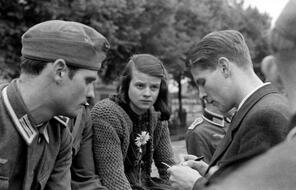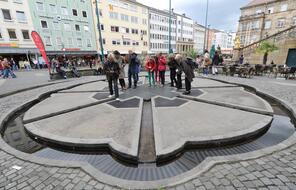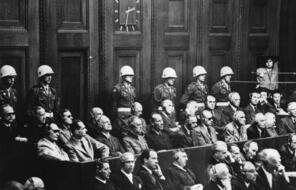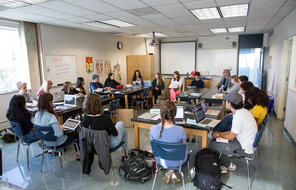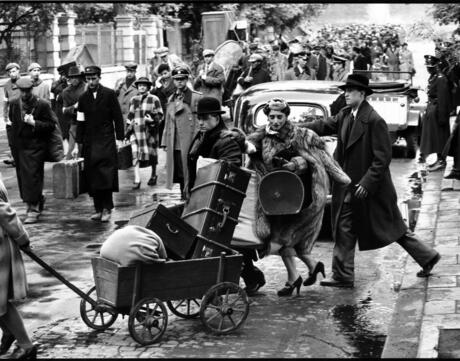
Pre-Viewing: “Take This Giant Leap”: Preparing to Teach Schindler’s List
Subject
- History
- Social Studies
Grade
6–12Language
English — USPublished
Overview
Overview
Poet and Holocaust survivor Sonia Weitz begins I Promised I Would Tell, her collection of poems about her experiences during this dark period of history, with the following lines:
Come, take this giant leap with me
into the other world . . . the other place
where language fails and imagery defies,
denies man’s consciousness . . . and dies
upon the altar of insanity. 1
In this lesson’s first activity, students learn that to study this history, and to bear witness to the depravity of the crimes committed during the Holocaust, is to take Weitz’s “giant leap.” Learning about the Holocaust requires us to examine events in history and examples of human behavior that both unsettle us and elude our attempts to explain them.
Before taking the “giant leap” Weitz describes, it is crucial for students to consider how they might form a thoughtful, respectful, and caring classroom community while engaging with the deeply affecting depiction of this dark period of history in Schindler’s List. The second activity in this lesson guides the class to do so by creating a class contract. The contract demonstrates to students that both the teacher and their classmates value and respect their voices, and it establishes rules and norms for proper engagement with such a powerful film.
- 1Sonia Schreiber Weitz, I Promised I Would Tell(Brookline, MA: Facing History and Ourselves, Inc., 2012), 66.
Preparing to Teach
A Note to Teachers
Lesson Plans
Activities
Materials and Downloads
Pre-Viewing: “Take This Giant Leap”: Preparing to Teach Schindler’s List
Unlimited Access to Learning. More Added Every Month.
Facing History & Ourselves is designed for educators who want to help students explore identity, think critically, grow emotionally, act ethically, and participate in civic life. It’s hard work, so we’ve developed some go-to professional learning opportunities to help you along the way.
Exploring ELA Text Selection with Julia Torres
On-Demand

Working for Justice, Equity and Civic Agency in Our Schools: A Conversation with Clint Smith
On-Demand

Centering Student Voices to Build Community and Agency
On-Demand




